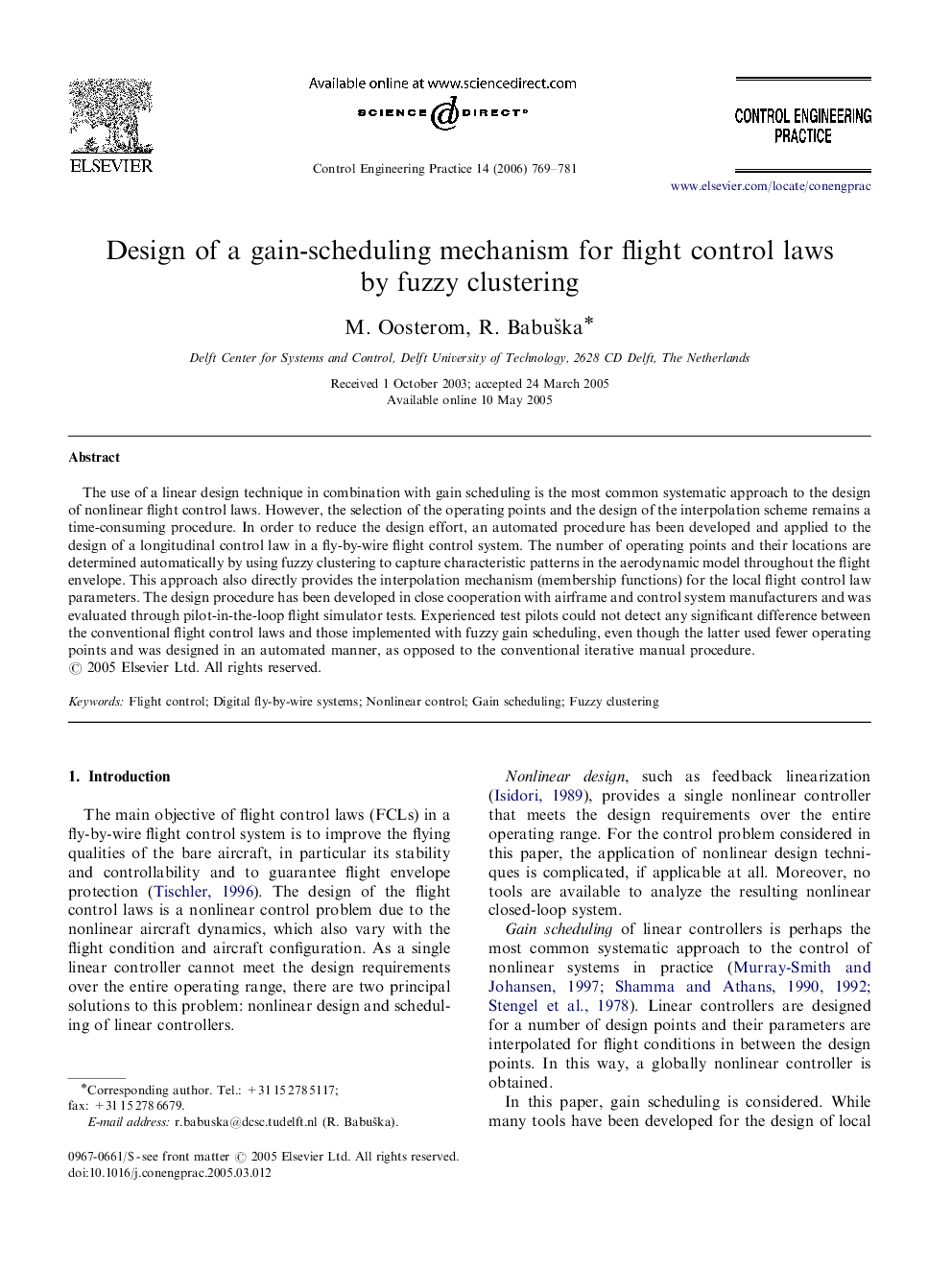| Article ID | Journal | Published Year | Pages | File Type |
|---|---|---|---|---|
| 700419 | Control Engineering Practice | 2006 | 13 Pages |
The use of a linear design technique in combination with gain scheduling is the most common systematic approach to the design of nonlinear flight control laws. However, the selection of the operating points and the design of the interpolation scheme remains a time-consuming procedure. In order to reduce the design effort, an automated procedure has been developed and applied to the design of a longitudinal control law in a fly-by-wire flight control system. The number of operating points and their locations are determined automatically by using fuzzy clustering to capture characteristic patterns in the aerodynamic model throughout the flight envelope. This approach also directly provides the interpolation mechanism (membership functions) for the local flight control law parameters. The design procedure has been developed in close cooperation with airframe and control system manufacturers and was evaluated through pilot-in-the-loop flight simulator tests. Experienced test pilots could not detect any significant difference between the conventional flight control laws and those implemented with fuzzy gain scheduling, even though the latter used fewer operating points and was designed in an automated manner, as opposed to the conventional iterative manual procedure.
